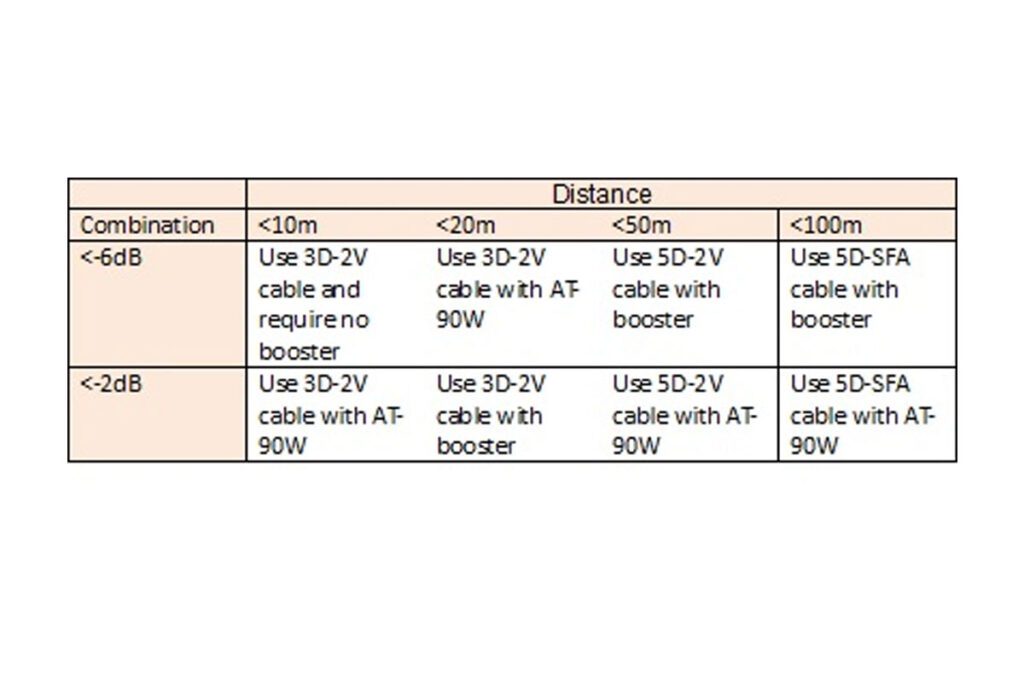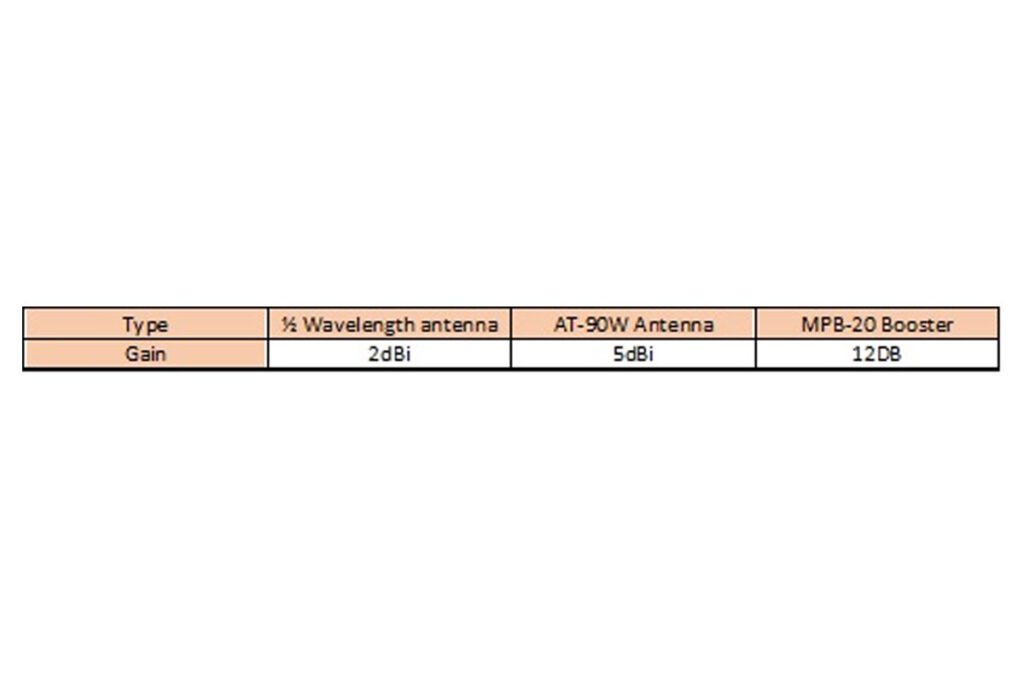1 | First, estimate the distance between the antenna and the receiver as well as the frequency of transmitting signals. Then, find a suitable cable specification according to the tolerance of the receiving system.
2 | Classifications of tolerance range on receiver system’s signal loss:
– Wider tolerance on signal loss: < – 10dB ~-6dB
– Acceptable tolerance on signal loss: -6dB ~-2dB
– Narrower tolerance on signal loss: < -2dB
3 | Greater cable signal loss will decrease the receiving distance and system stability, so a booster must be added to offer enough gain to make up the loss. However, the booster should not offer excessive gain as it will cause receiver intermodulation distortion and create unnecessary interference, thus affecting receiving quality.
4 | The following chart gives specifications of cables, suitable antennas and boosters needed based on transmitting distance and tolerance range of signal loss.

5 | Formula to calculate antenna gain:
System Gain of antenna system = antenna gain – signal loss of coaxial cable + booster gain.
An example of calculating the gain of an antenna system transmitting on an 800 MHz frequency based on the components of 1/2 wavelength antenna, MPB-20 booster and 50 meters of 5D-2V coaxial cable:
A: From Chart A, the gain of a 1/2 wavelength antenna and a MPB-20 booster is 2 dBi and 12 dB.
B: From Chart B, signal loss of a 5D-2V cable=3.8 db / 10m @ 1 GHz
C: Hence, total signal loss of a 50 meter cable = 3.8 dB X 5 = 19 dB
D: Put A, C into the formula. Total gain of antenna system = 2 dB (Antenna) – 19 dB (Coaxial cable) + 12 dB(Booster) = -5 dB.
E: Refer to #2 tolerance of signal loss. Above design can be classified as 2B (see above)
F: When making antenna cables, please use genuine connectors. For VHF band, select BNC connectors. For UHF band, it would be better to use TNC connectors.
Chart A | Gain specification of MIPRO’s antenna and booster

Chart B | General specifications of 50Ω coaxial cable

*Note: Characteristics of above coaxial cables are industry standard. Signal loss may vary from its brands and specifications. Hence, for the most accurate calculation, please refer to the specifications provided by the manufacturer.